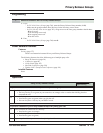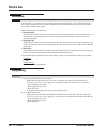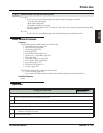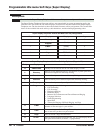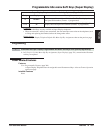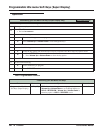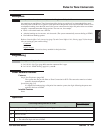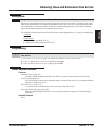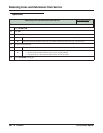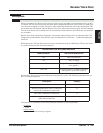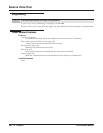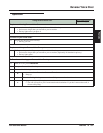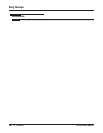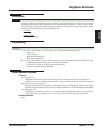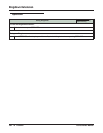
Removing Lines and Extensions from Service
DSX Software Manual Features ◆ 287
Features
Removing Lines and Extensions from Service
Description
Supervisors and attendants can remove problem lines and extensions from service. This helps ensure maxi-
mum system performance. For example, the attendant can busy-out a noisy line or problem extension until
service personnel can repair the problem. The line or extension the appears busy to all callers. Following
repair, the attendant or supervisor can return the line to service.
The extension or line removed from service shows as busy on the appropriate key (e.g., line key or Hotline key).
Conditions
• None
Default Setting
• Enabled for the attendant (COS 1).
• Disabled at all other extensions (COS 2-15).
Programming
1. In 2102-01: Class of Service (page 724), check the extension’s Class of Service level.
2. If yes, in 1402-06: Direct Line Access (page 634) enter Yes.
3. If no, in 1402-06: Direct Line Access (page 634) enter No.
Other Related Features
Features
Attendant Position (page 24)
Normally, system attendants should have the ability to remove lines and extensions from service.
Call Forwarding (page 44)
If Call Forwarding is enabled at an extension when it is removed from service, it is reinstated when the
extension is returned to service.
Direct Line Access (page 115)
An extension user with Direct Line Access can remove lines from service.
Selectable Display Messaging (page 300)
Removing and returning an extension to service does not cancel an extension’s Selectable Display
Messaging.
IntraMail Features
None
Temporarily remove problem extensions and lines from service until they can be repaired.
1.
Enable Direct Line Access for all extensions that should be able remove lines and extensions
from service.



